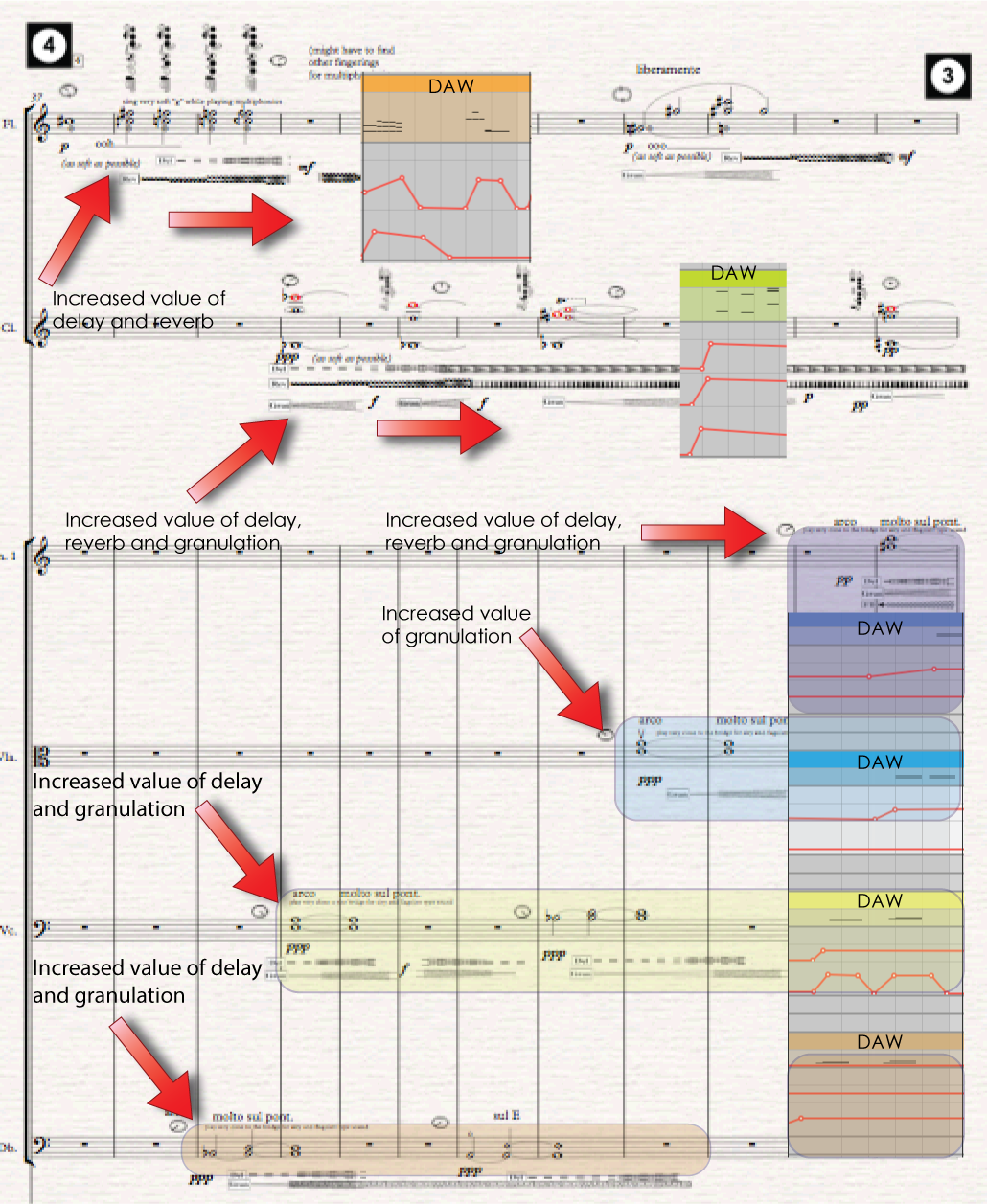This last week I have been proofreading through the final version of Kuuki no Sukima. As recommended by conductor Halldis Rønning I did write two versions of the score, one with all the electronic graphics and another without except audio graphics indicating the overall volume. The score with all the electronic graphics is named Composer-Conductor and the other one Performance Score. Instead of adding all instructions to the score as is the tradition i.e. instrumentation, notation, instructions etc. I decided to make it as a separate file (book) since the score itself is already quite many pages and therefore big and heavy. It also helps to have the instructions separate since, in my opinion, it adds to the clarity of the work. To keep the music and technical/technological information separated has an aesthetic value.
Sonic analyzes cont. from a blog with the same title.
Measure 37 – 49
After the fermata in measure 36, the Score and the DAW get synchronized before the flute comes in. Here we can easily hear the electronic effects of delay and reverb as the flute continues to play (and sing). The electronic effects get even more audible as the strings and the clarinet enters with an increasing delay, reverb, and granulation. This part is one of my favorites since it sounds very close to the sonority that I had in mind and ads a very elaborate sonic cloud to the chord progression.

The diagram above shows measures 37 – 49 and the connection of the Score to DAW. As can be seen, the volume of the electronic effects increases greatly when the when the multiphonics begin. This comes true when listening to the video recordings below.
It is particularly interesting that the electronic sounds are very clear even though the volume of the instruments, which is the power source of the electronic sounds, is very weak. The main reason is that the effects are very open or strong f (about 85%). It, therefore, seems necessary to increase their strengths very much if low play. It is also unlikely that both the number of acoustics and a large spectrum in the sound will help create this sound-wall of acoustic and electronic sounds.
Synchronization points